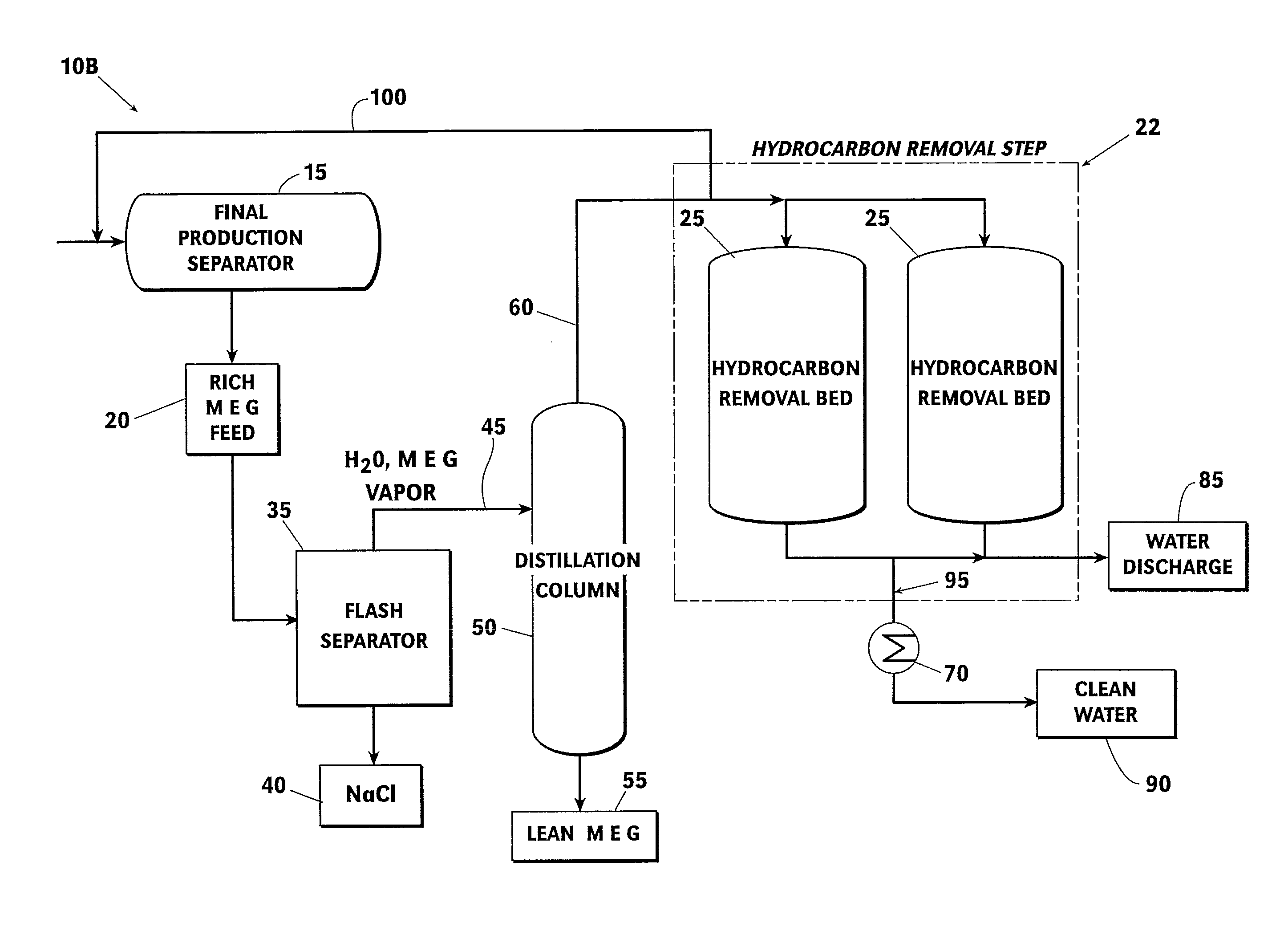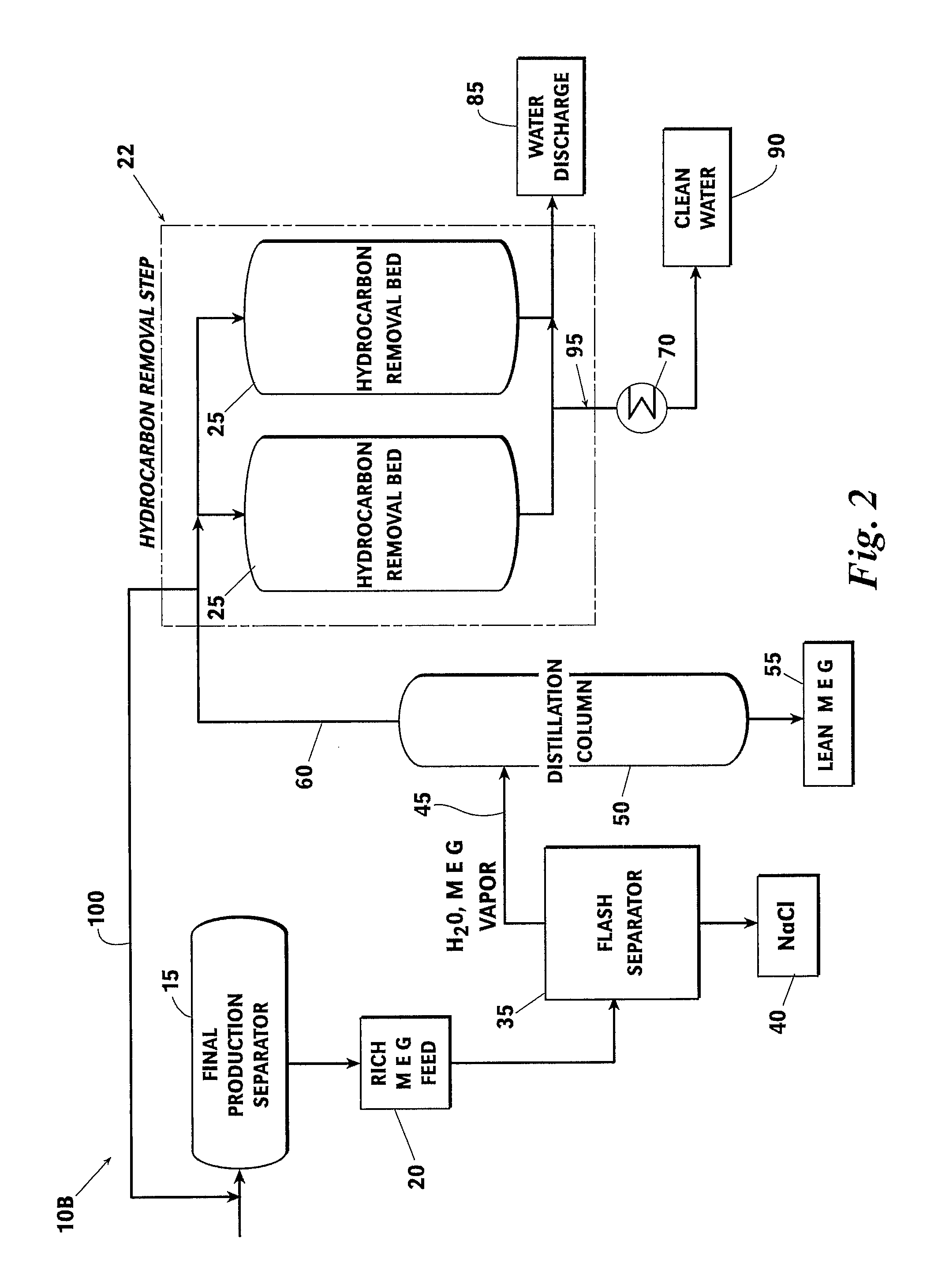Hydrocarbon Removal from Gas Process Feed Streams by Regenerable Filters
a technology of gas process feed stream and filter, which is applied in the direction of chemistry apparatus and processes, separation processes, dispersed particle separation, etc., can solve the problems of increased processing equipment volume and footprint, and high concentration of meg reclamation process. achieve the effect of reducing hydrocarbon content and reducing the volume and footprint of processing equipmen
- Summary
- Abstract
- Description
- Claims
- Application Information
AI Technical Summary
Benefits of technology
Problems solved by technology
Method used
Image
Examples
Embodiment Construction
[0033]As shown in FIG. 1, a regenerable hydrocarbon adsorbent material may be used to adsorb the hydrocarbons from the rich MEG feed stream. Suitable adsorbent materials include, but are not limited to, DOWEX OPTIPORE (Dow Chemical Co., Midland, Mich.). A preferred embodiment of a hydrocarbon removal process 10A practiced according to this invention begins with the final production separator 15, which produces a mixture of produced water and MEG commonly referred to as rich MEG. The rich MEG feed stream 20 is routed to a hydrocarbon removal step 22 comprised of dual hydrocarbon removal beds 25 which contain solid adsorbent material and alternate between adsorption and regeneration phases. In the adsorption phase, hydrocarbons are selectively transferred from the rich MEG feed stream 20 to the surface of the solid adsorbent material. Although two hydrocarbon removal beds 25 are shown in FIG. 1, the step may use more than two beds or a single bed. The rich MEG stream with the majority...
PUM
 Login to View More
Login to View More Abstract
Description
Claims
Application Information
 Login to View More
Login to View More - R&D
- Intellectual Property
- Life Sciences
- Materials
- Tech Scout
- Unparalleled Data Quality
- Higher Quality Content
- 60% Fewer Hallucinations
Browse by: Latest US Patents, China's latest patents, Technical Efficacy Thesaurus, Application Domain, Technology Topic, Popular Technical Reports.
© 2025 PatSnap. All rights reserved.Legal|Privacy policy|Modern Slavery Act Transparency Statement|Sitemap|About US| Contact US: help@patsnap.com



